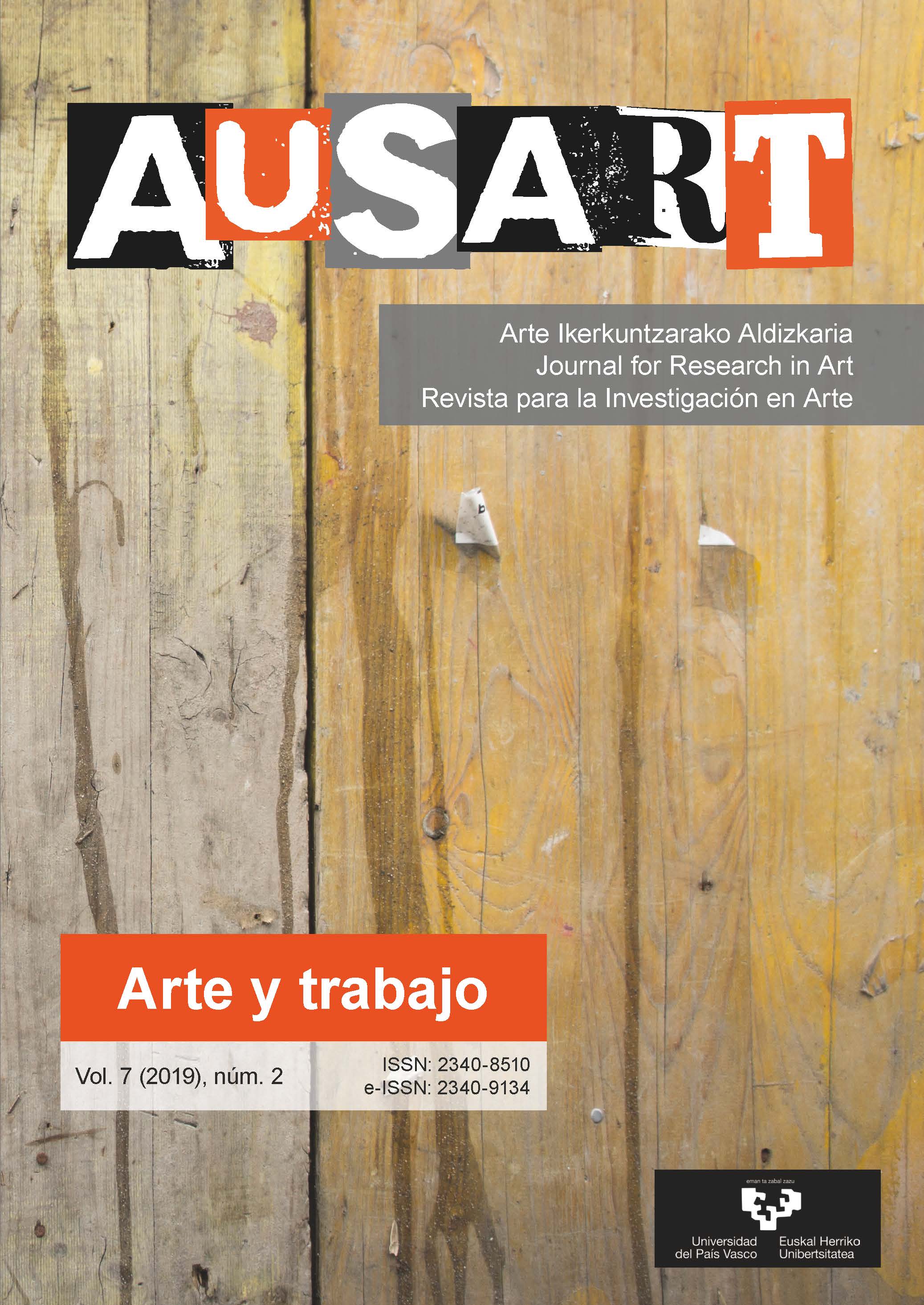Exploring repetition in Chinese video art through pleasure and laughter
##plugins.themes.bootstrap3.article.main##
##plugins.themes.bootstrap3.article.sidebar##
Resumen
This paper critically analyses the perceptive and emotional side of repetition in contemporary Chinese video art. Nowadays, that post-editing technology has become affordable for most of the artists in China, they are still engaging with repetition as a creative strategy. Nevertheless, as researchers are mostly focusing on the repetitive and almost empirical nature of the content of the 90s, this renewed tendency seems to have gone rather unnoticed. Through the analysis of 4 video artworks. This essay aims to be an attempt to serve as a starting point for further study in the field. For this purpose, the paper investigates how Kan Xuan's and Cui Xiuwen's aesthetic strategies can be linked to pleasure, exploring ideas related to both Zen and voyeurism. Moreover, it also evaluates Zhang Peili's and Jiang Zhi'srepetitive procedures underlying a change of the original meaning that may result on a humorous reaction.
Cómo citar
##plugins.themes.bootstrap3.article.details##
Cacchione, Orianna. 2018. «Related rhythms: Situating Zhang Peili and contemporary Chinese vídeo art in the globalizing world». Journal of Contemporary Chinese Art 5(1): 21-39. https://doi.org/10.1386/jcca.5.1.21_1
Cui, Xiuwen. (2013) 2018. «Cui Xiuwen». Interviewed by Monica Merlin. Tate Research Centre Asia, 20 march. https://n9.cl/az15v
Deleuze, Gilles & Paul Patton. 1994. «Chapter II: Repetition for itself». In Difference & repetition, 70-128. London: Bloomsbury
Eco, Umberto. 2005. «Innovation and repetition: Between modern and postmodern aesthetics». Dedalus 134(4): 191-207. https://doi.org/10.1162/001152605774431527
García, Luis-Manuel. 2005. «On and on: Repetition as process and pleasure in electronic dance music». Society for Music Theory. https://doi.org/10.30535/mto.11.4.2
Geng, Yang. & Lingling Peng. 2016. «The time phenomenon of Chinese Zen and vídeo art in China, 1988-1998». Cultura: International Journal of Philosophy of Culture and Axiology 13(2): 103-124. https://doi.org/10.3726/b10729_103
Hill, Katie. 2016. «Kan Xuan: Between thinking and feeling». COBO Social, August 3. https://n9.cl/f78fe
Ho, Louis. 2013. «Yue Minjun: Iconographies of repetition». Modern Chinese Literature and Culture 25(2): 219-248. https://n9.cl/ddg6f
Hou, Hanru. 2009. «Objectivity, absurdity, and social critique: A conversation with Hou Hanru». Interviewed by Michael Zheng. Michaelzheng.org. Personal web page, 12 jan. https://n9.cl/73o7iu
Jiang, Jiehong. 2010. Red: the Chinese Cultural Revolution. London: Jonathan Cape
Karetzky, Patricia Eichenbaum. 2016. Cui Xiuwen. Yishu Journal of Contemporary Chinese Art 15(5): 36-47
Klein, Sheri. 2007. Art and laughter. London: I.B. Tauris. https://doi.org/10.5040/9780755604197
Low, Joni. 2012. «Kan Xuan: Performing the imagination». Yishu Journal of Contemporary Chinese Art 11(3): 42-47. https://n9.cl/278yj
Lu, Leiping. 2016. «Beyond objects: Kan Xuan's vídeo art work». In Kan Xuan, edited by Jonathan Watkins & Lu Leiping, 7-27. Birmingham UK: Ikon Gallery
Man, Eva Kit-Wa. 2015. «Contemporary philosophical aesthetics in China: The relation between subject and objects». In Issues of contemporary art and aesthetics in Chinese context. Heidelberg: Springer. https://doi.org/10.1007/978-3-662-46510-3_4
Margulis, Elizabeth Hellmuth. 2014. On repeat: How music plays the mind. Oxford: Oxford University. https://doi.org/10.1093/acprof:oso/9780199990825.001.0001
May, Ron. 1997. «Voyeurism». Encyclopedia of feminist literary theory, edited by Elizabeth Kowaleski-Wallace, 590-591. London: Routledge
Peckham, Robin. 2011. «In search of the alluring: The art of Zhang Peili». Leap, 28 nov. https://n9.cl/6u1bk
Pi, Li. 2009. «Chinese contemporary vídeo art». Media arts: Practice, institutions and histories, 23(3): 303-307. https://doi.org/10.1080/09528820902954937
Ross, Christine. 2006. «The temporalities of vídeo: Extendedness revisited». Art Journal 65(3): 82-99. https://doi.org/10.1080/00043249.2006.10791217
Schopenhauer, Arthur. (1818) 1969. The world as will and representation. Translated from the german by E.F.J. Payne. New York: Dover
Wang, Jiaxin. 2003. «From the 'Lady's' to 'Underground'». CuiXiuwen.com, Personal web page. https://n9.cl/r1icu
Wu, Hu & Christopher Phillips. 2004. Between the past and the future: New photography and vídeo from China. London: Steidl
Wu, Hung. 2008. «Television in contemporary Chinese art». October Magazine 125: 65-90. https://doi.org/10.1162/octo.2008.125.1.65
Wu, Hung. 2014. Contemporary Chinese art: A history 1970s-2000s. London: Thames & Hudson
Wu, Meichun & Zhijie Qiu. (2002) 2010. «The rise and development of video art and the maturity of new media art». In Contemporary Chinese art: Primary documents, edited by Wu Hung & Peggy Wang, 232-238. Durham NC: Duke University
Xuan, Kan. 2013. «Kan Xuan interview part 3: 'Looking for…'». Vimeo video, 8:35 min. https://vimeo.com/89586329

Esta obra está bajo una licencia internacional Creative Commons Atribución-CompartirIgual 4.0.

Atribución-CompartirIgual 4.0 Internacional (CC BY-SA 4.0)
Usted es libre de:
- Compartir — copiar y redistribuir el material en cualquier medio o formato
- Adaptar — remezclar, transformar y construir a partir del material para cualquier propósito, incluso comercialmente.


 https://orcid.org/0000-0001-9238-3480
https://orcid.org/0000-0001-9238-3480